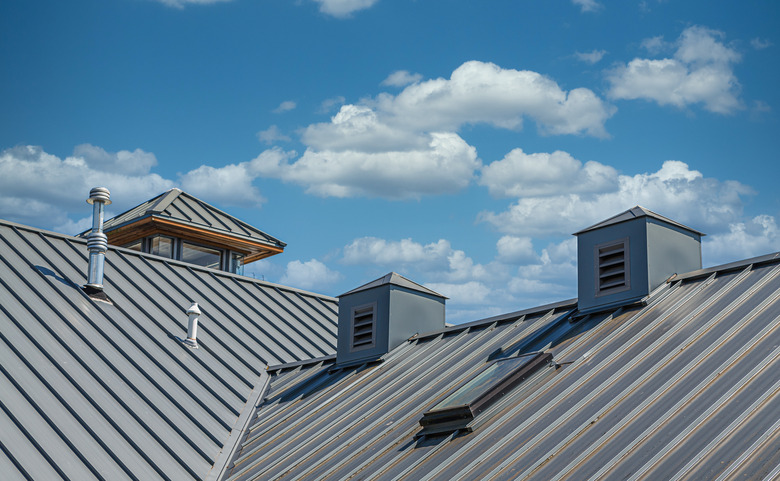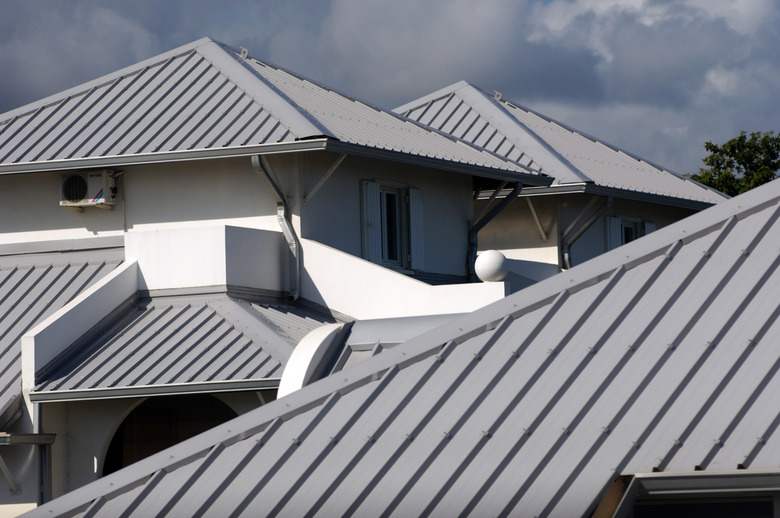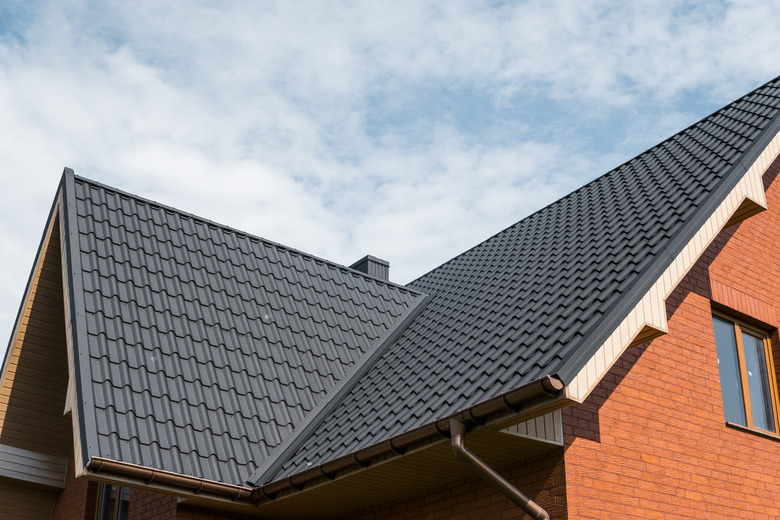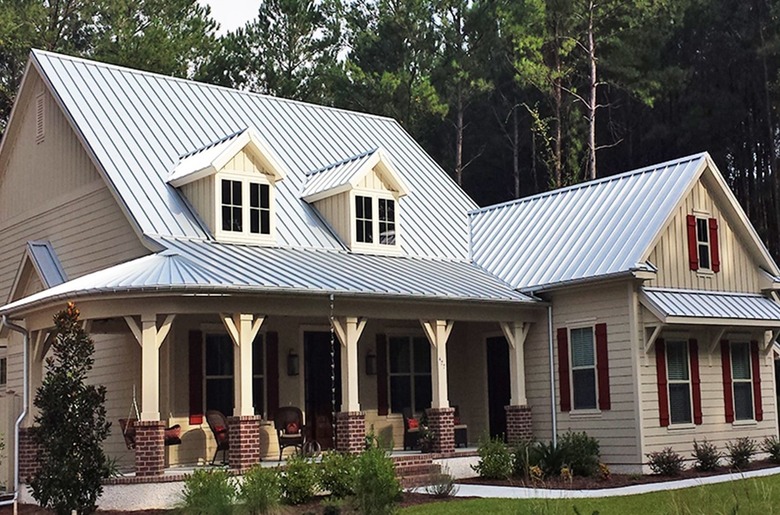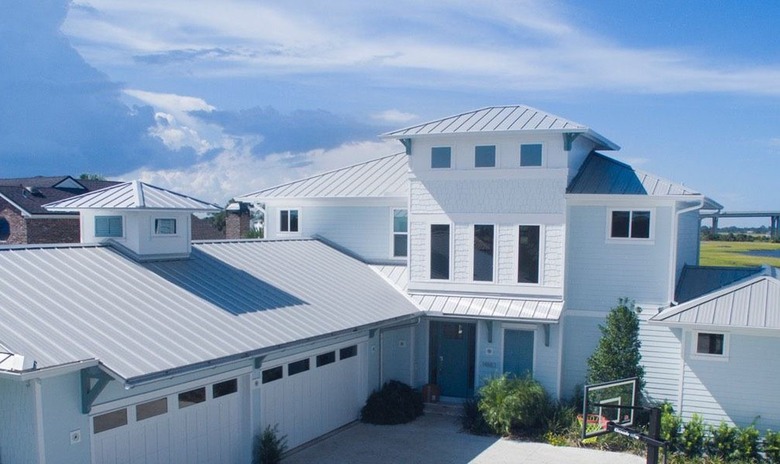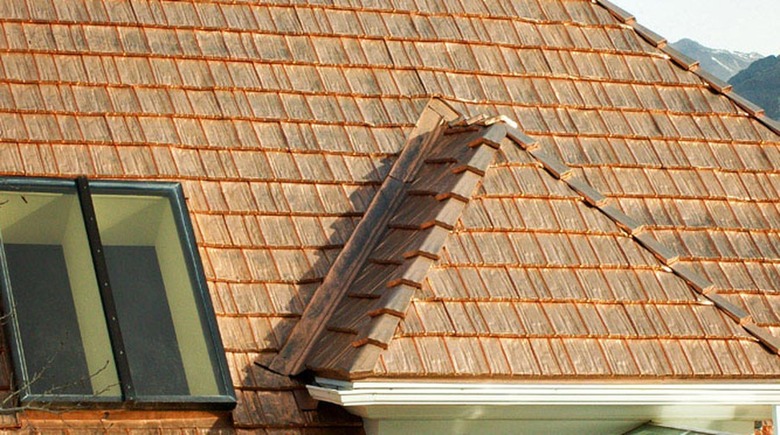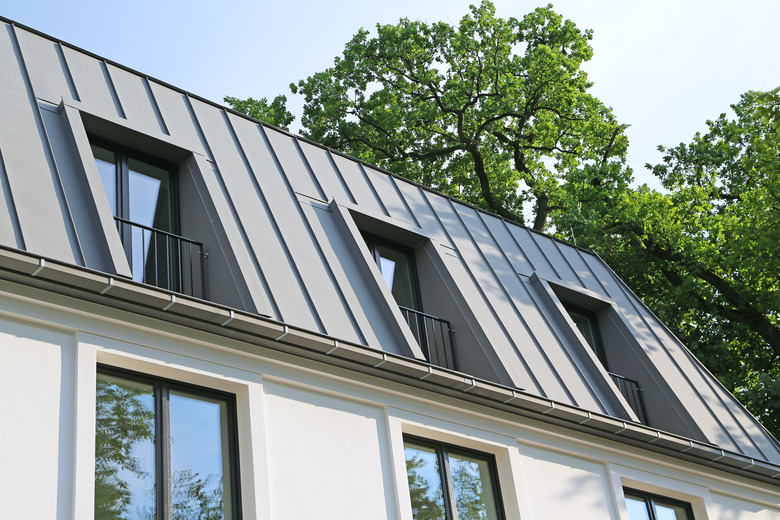Types Of Metal Roofs: A Cost And Buyer's Guide
When you start investigating, you'll find that the term "metal roof" is pretty generic and refers to many different types of metal roofs. Metal roofs come in different styles, including standing seam and stamped panel. These roofs come in a wide variety of materials as well, from copper to galvanized steel. The more information you have about the ins and outs of metal roofs, the better you can decide which one is right for you.
Standing Seam Metal Roofs
Sometimes called vertical seam metal roofs, standing seam roofs consist of several vertical panels interlocked together. These panels lock together in a way that allows them to resist water while still sliding around just enough that they don't get damaged as the metal expands and contracts in response to changes in the climate. Each panel has vertical ribs spaced 6, 9, or 12 inches apart to add a bit of style and visual curb appeal to the roof.
Standing seam roofs install much more quickly than traditional shingle roofs thanks to their large panel size. They typically come in sheets 3 feet wide by 6, 8, 10, 12, 14, or 16 feet long. You can, however, purchase panels in custom sizes. Installation of standing seam roofs is easiest when you have a large, flat expanse of roof with few chimneys, vents, and other obstacles.
Stamped Panel Metal Roofs
Standing seam roofs create a clean and contemporary look, but that's not always what you want. When you want a different aesthetic, consider stamped metal panel roofs. Although they're made from metal, these roofs convincingly mimic the look of slate, wood shake, tile, and other roofing materials. This can be quite beneficial, giving you the look of slate roofing without the weight or offering the appeal of wood shingles without the sealing and maintenance.
These panels interlock with each other in much the same manner as those on a standing seam roof but join each other on all four sides. They're also installed in alternating courses to further create the look of individual shingles. These roofs take a bit longer to install than a standing seam metal roof but are well worth a little extra time to get the look you want.
Galvanized Steel Roofs
When pondering the various types of metal roofs, the type of metal is just as important as how the roof goes together. Despite its strength, steel by itself makes a poor roofing material because it's susceptible to rust and corrosion. To solve this problem, roofing manufacturers galvanize the steel. This means they coat it with zinc and other materials that help it resist rust. The metal is often further protected by a layer of epoxy paint.
A steel roof can easily last 30 years or more, but it's not suitable for all applications. Despite galvanization, steel doesn't hold up as long on the coast where the air is salty and corrosive. It's also best to avoid galvanized steel on the farm or at the ranch, as ammonia gas from manure can speed corrosion as well.
Aluminum Metal Roofs
Aluminum is very lightweight and won't rust or corrode like steel can, making it a better choice where salty air is an issue. It also stores less heat than steel, so an aluminum roof will cool much faster than a steel one when the sun goes down, helping to reduce cooling costs. An aluminum roof can easily last 50 years.
Unfortunately, it's not quite as strong as steel, making it easier to dent in the event of a fallen tree limb or severe hail storm. It's also more expensive than steel. If you're concerned about the environment, aluminum presents a double-edged sword. It's fully recyclable when you're finished with it, but producing it uses very large amounts of energy.
Copper Metal Roofs
Metal roofs made from copper are absolutely stunning, and they also last 100 years or more. In order to have a copper roof, however, you must have two things. The first is a love for the way copper looks after it has aged to a greenish patina, as it won't stay shiny forever. The second thing you need is a big budget.
Copper is perhaps the most expensive metal roofing material available today. As such, homeowners sometimes choose to install it on a special part of the roof, such as a cupola or bay window. They then choose a more affordable option for the remainder of the roof. If your budget allows it, copper is a beautiful, durable, and recyclable choice.
Zinc Metal Roofs
Although quite popular in Europe, zinc roofs aren't as common in the United States. Perhaps they should be. Zinc roofs last 80 to 100 years and are fully recyclable when their useful life is over. Like copper, zinc roofs develop a patina over time. The roof starts out almost black in color and then turns to a lighter blue-gray as it ages.
Like copper, zinc roofs are pricey. It's also critical that you install zinc properly. Moisture trapped between the roof and the roofing deck creates mold problems and leaks, so you'll want an experienced roofer to install zinc for you.
Pros of Metal Roofs
All types of metal roofs share a few pros that can make them a good choice. Metal roofs easily last 30 years or more, and some will last much longer. A metal roof won't peel or crack, requires little to no maintenance, and if it gets dirty, it will come clean with your garden hose and a mild detergent.
You can also easily recycle a metal roof at the end of its life span and install it at any time of the year. Asphalt shingles and other roofing materials work in conjunction with adhesive materials that don't work when it's too cold outside. Metal roofing doesn't suffer from these limitations, so you can get your roof replacement whenever you need it.
Metal roofing systems are also energy efficient. Much of the light and therefore heat from the sun bounces off metal roofs. The minimal amount of heat that metal roofs do absorb dissipates quickly when the sun goes down. Many homeowners find their cooling bill noticeably reduced by a new metal roof, sometimes by as much as 25 percent.
A metal roof may also save you up to 30 percent on your homeowners' insurance. A metal roof is extremely fire-resistant and dissipates electricity if your house were to be hit by lightning. Some insurance companies will offer you a premium discount thanks to your metal roof's increased fire protection.
You may find a metal roof a lifesaver when dealing with an HOA as well. Some HOAs insist on maintaining a consistent look throughout the neighborhood, but you may not want to install asphalt or other approved shingles for one reason or another. A stamped panel roof lets you get the type of roof you want while creating the look your HOA wants.
Cons of Metal Roofs
Some of the cons of metal roofs are left over from their early days and are no longer issues. A big one is noise. It's true that rain on an old metal roof was quite loud, but today's roofs get installed over insulation or wood sheathing, both of which reduce this noise, making it comparable to the sound of rain on an asphalt roof.
Modern metal roof designs also take hail and falling tree limbs into account. If a limb or hailstone is large enough to damage a modern metal roof, it very likely would have damaged a different roofing material as well. All that being said, metal roofs do have some genuine cons.
One is that installing a metal roof is not a DIY job, so you won't get to save money by doing the roofing installation yourself. Metal roofs can provide some installation challenges. For example, it is much harder to work large metal roof panels around a chimney or vent than it is to work around these obstacles with smaller shingles.
Metal roofs are also relatively expensive, but when you compare their cost to their longevity, there's no doubt that metal roofs offer a good value. This fact is little consolation, however, if you need a new roof now on a limited budget. Even if you find the money, you may struggle to find a contractor.
Asphalt shingles cover about 70 percent of American homes, so contractors who have ample experience with metal roofs may be hard to find. If friends and family don't have any recommendations, you can turn to home improvement advice sites online. Another good option is to contact a metal roof manufacturer and ask it to put you in touch with a qualified local installer.
Types of Metal Roofs and Their Cost
The main cost factor of a metal roof is what type of metal you choose. The complexity of the job will also add to the cost. The least expensive metal roof option is steel, which runs about $300 to $900 per square installed. A square is a roofing term that denotes an area of 100 square feet. Costing about 20 percent more than steel, aluminum runs about $500 to $1,000 per square.
If you like the look of copper and zinc, expect to pay about $1,800 per copper square and $1,005 to $2,800 per square of zinc. Basic installation costs go up if you have an old roof to tear off first, which adds $100 to $150 per square to your costs. Underlayment, fasteners, and other materials can also add to the costs.
Metal Roof Warranties
Metal roofs are durable and can withstand hail, high winds, fire, and stormy weather. Given their resistance to so many problems, metal roofs often come with long warranties, ranging from 30 to 50 years. Before jumping on a long warranty, however, read the fine print. Some manufacturers cover different parts of the roof for different time periods.
Shoddy and improper installations usually void metal roof warranties, so be careful about whom you hire. Note too that metal roof manufacturers warrant their products only and not the labor or workmanship of your roofer. You should ask your roofer what kind of warranty he offers on his work.
References
- Bill Ragan Roofing Company: The Pros and Cons of Metal Roofing (Buyer's Guide Included)
- Metal Roofing Alliance: Residential Metal Roofing Buyer's Guide
- Roofing Calculator: Metal Roofing Buying Guide 2021: Facts, Myths, Prices, FAQ – Metal Roofs
- HomeTips: Metal Roofing – Ultimate Buying Guide
- Modernize: How Much Does a New Metal Roof Cost?
- Sheffield Metals International: Standing Seam vs. Stamped Metal Shingle Roofs: Which is Best For You?
- Western States Metal Roofing: What Is a Zinc Roof? Pros, Cons, And Alternatives
